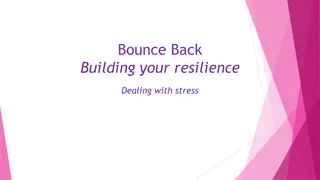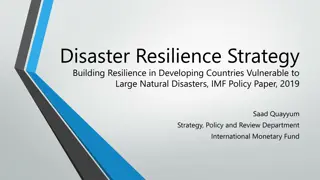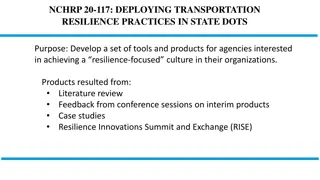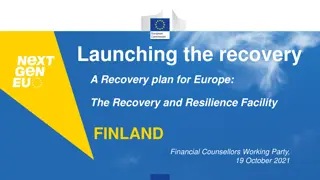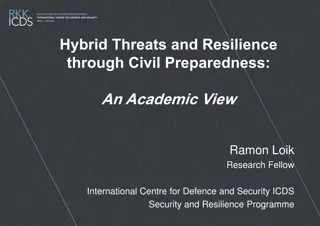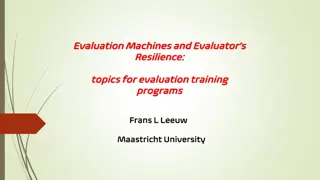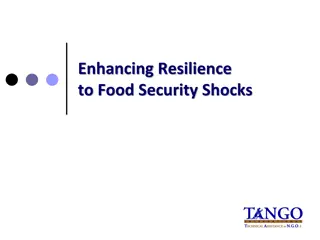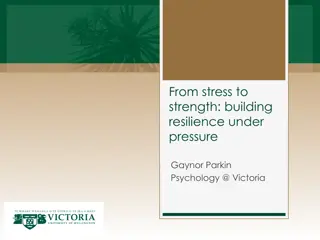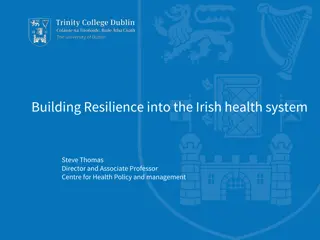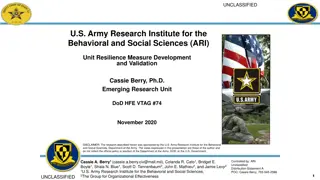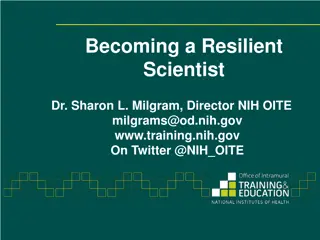Building Resilience: Science-Backed Strategies for Growth
Strategies to build resilience include changing the narrative, facing fears, practicing self-compassion, meditating, cultivating forgiveness, and letting go of anger. Expressive writing and finding silver linings are practical techniques for resilience building.
Uploaded on Feb 23, 2025 | 1 Views
Download Presentation

Please find below an Image/Link to download the presentation.
The content on the website is provided AS IS for your information and personal use only. It may not be sold, licensed, or shared on other websites without obtaining consent from the author.If you encounter any issues during the download, it is possible that the publisher has removed the file from their server.
You are allowed to download the files provided on this website for personal or commercial use, subject to the condition that they are used lawfully. All files are the property of their respective owners.
The content on the website is provided AS IS for your information and personal use only. It may not be sold, licensed, or shared on other websites without obtaining consent from the author.
E N D
Presentation Transcript
Building resilience 'Five Science-Backed Strategies to Build Resilience an article by Kira M. Newman in March 2016 and use of the website Greater Good in Action https://ggia.berkeley.edu/practice.
What might the following terms mean? What do they mean to you, personally? change the narrative face your fears practice self-compassion meditate cultivate forgiveness letting go of anger fail well
Change the Narrative: Change the Narrative: 'When something bad happens, we often relive the event over and over in our heads, rehashing the pain. This process is called rumination; it s like a cognitive spinning of the wheels, and it doesn t move us forward toward healing and growth'
How to do it: Pick an event or situation that has been troubling you and personal to you. Now follow the following steps: Tips for writing Find a time and place where you won t be disturbed. Write continuously for at least 20 minutes. Don t worry about spelling or grammar. Write only for yourself. Write about something extremely personal and important to you. Deal only with events or situations you can handle now that is, don t write about a trauma too soon after it has happened if it feels too overwhelming. Strategy 1: Strategy 1: Expressive Writing: 20 minutes a Writing: 20 minutes a day for four day for four consecutive days consecutive days Expressive Optional final step: After the four days of writing, try writing from the perspectives of other people involved in the event or situation.'
How to do it: Take ten minutes every day for three weeks Strategy 2: Strategy 2: Finding Silver Finding Silver Linings Linings 1. List five things that make you feel like your life is enjoyable, enriching, or worthwhile at this moment. These things can be as general as being in good health or as specific as drinking a delicious cup of coffee this morning. The purpose of this first step is to help you shift into a positive state of mind about your life in general. 2. Next, think about the most recent time when something didn t go your way, or when you felt frustrated, irritated, or upset. 3. In a few sentences, briefly describe the situation in writing. 4. Then, list three things that can help you see the bright side of this situation. For example, perhaps you missed your bus this morning. Three ways to look on the bright side of this situation might be: a. Even though you missed the bus, you got some good exercise when you were running to catch it. b. You re fortunate to live in a city where there was another bus just 10 minutes later, or where buses run reliably at all. c. Ten years from now, you likely won t remember what happened this morning.







